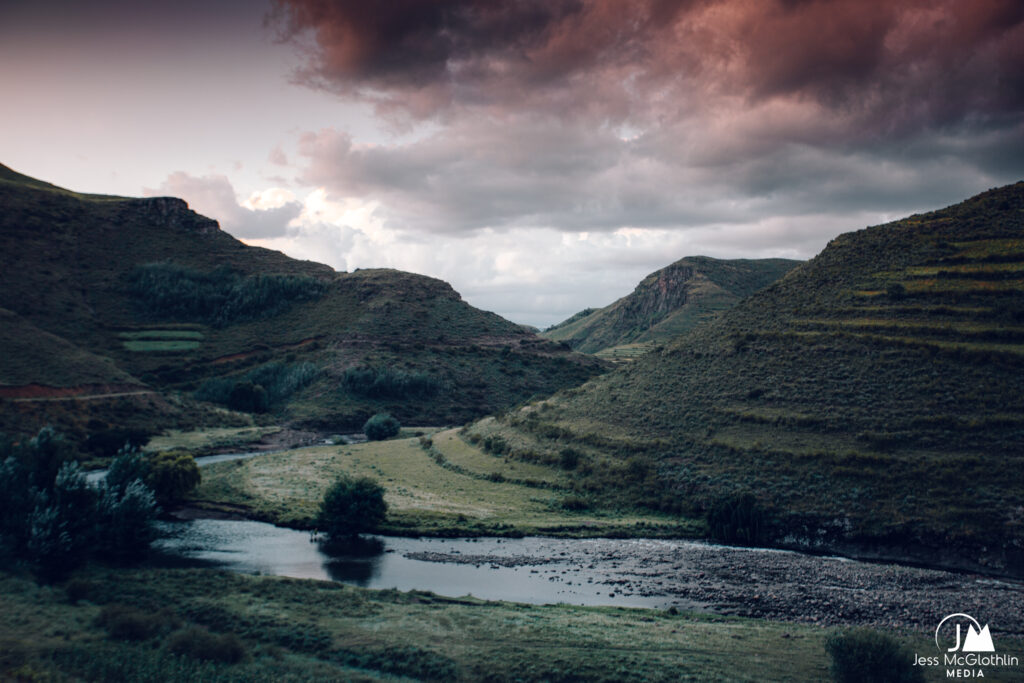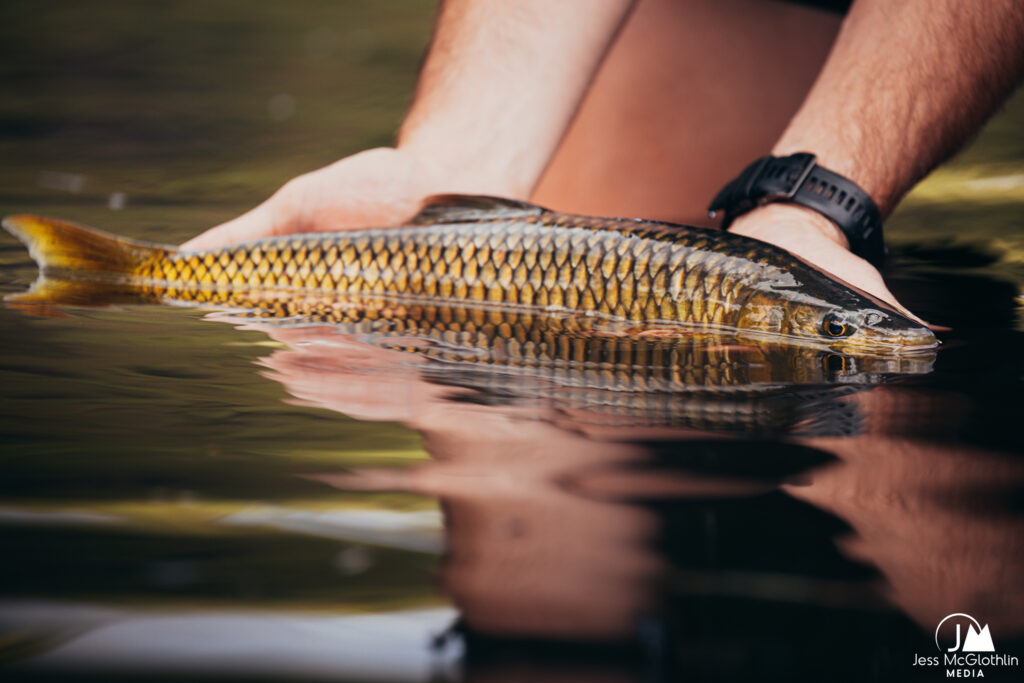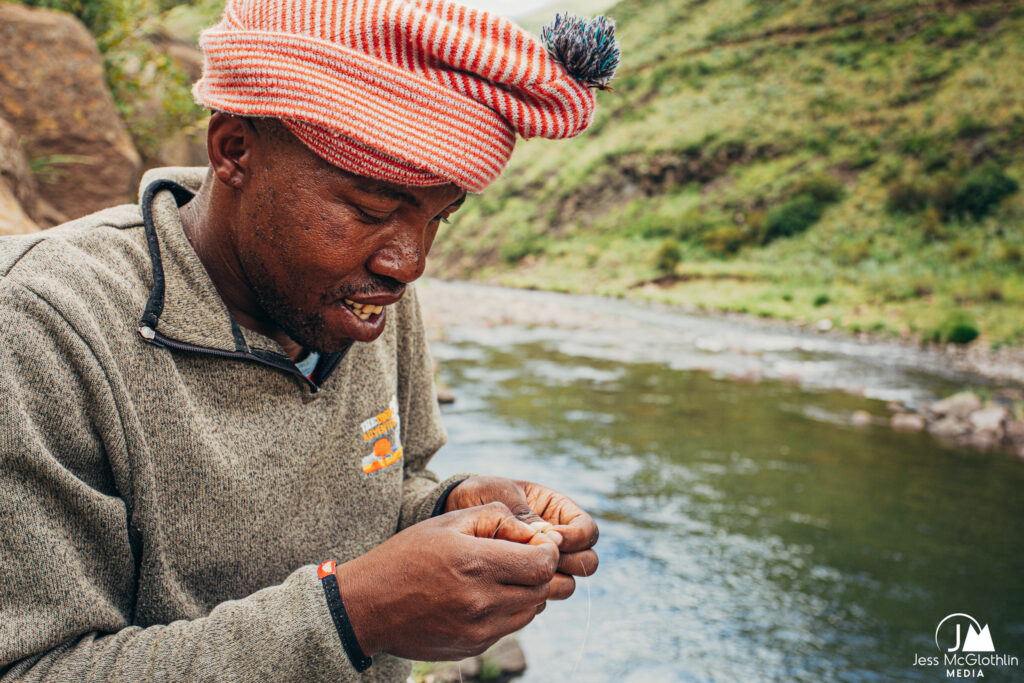The end of January and early February was spent exploring the Johannesburg area with good friends, then I flew to Pietermaritzburg and met up with the African Waters team. From there, it was a 10-hour drive across the border into Lesotho, crossing over mountain passes and winding our way along dirt roads past the massive Katse Dam (Africa’s second largest double-curvature arch dam) and on to Makhangoa Community Camp. The small camp rests in the Maluti Mountains, not far from the local village of Makhangoa.

Guide Greg and I arrived as dusk was falling, on a cool, foggy, rainy night that challenged my perceptions of African weather. We met up with the rest of the guide team—Kyle, Riley, and Chris were awesome—and settled in for a “get to know you” before the work started.
It’s still one of my favorite parts of this job; arriving into a new camp or lodge and getting the lay of the land and the crew at hand. It’s never boring.
You’ll read more about the week in upcoming magazine articles, but suffice to say, yellowfish are unlike any species I’d fished for anywhere else around the world. South Africans call them “African bonefish,” and the same fits. Constantly on the move, picky dry fly eaters, and almost comical in appearance, yellowfish have quickly pressed near the top of my “fish I like fishing for” list, and I’m already very keen to get back to Africa for more chances to chase the fish.

My time in Lesotho was epic, and I can’t wait to share the stories. From long walks along the nightly Bokong River, to galloping young two-year old horses along dirt paths, to sitting outside in the dark at night with beer and cigarettes solving life’s problems, it felt so strangely like home.
Thanks to the African Waters team for having me; I’m looking forward to he next adventures! In the meantime, stay tuned here and on Instagram for updates as these Lesotho stories and images hit the streets.
